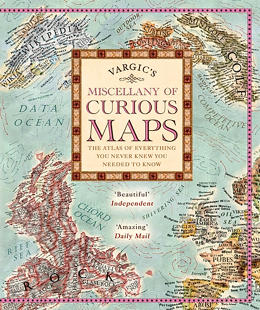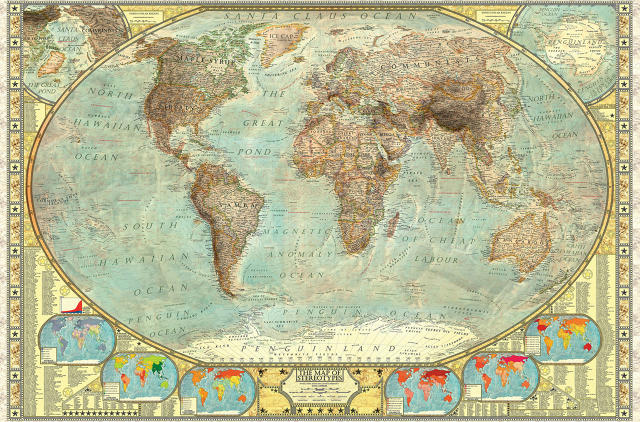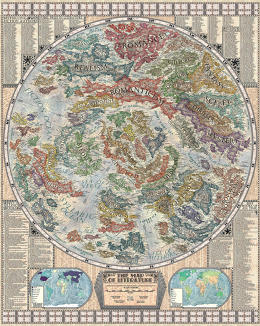
Where once they were done under the quill of cartographers, maps today are made by satellite. But Slovakian designer Martin Vargic's maps are different. Although they herald back to the glory days of map making in an era of romanticism and enlightenment, Vargic's exquisitely detailed maps deals with purely imaginary worlds: ones in which landmasses are made up of tectonic plates of literature, or what the Internet would look like as a planet.
According to the prolific 17-year-old (!) designer—he says he creates at least one map or infographic a week—his alternate reality maps are inspired by the look and feel of old National Geographic maps. Vargic tells me he's always been fascinated by maps, and he got his first taste for creating them when he decided to visualize what the British islands would look like in the year 2100, with water levels up to 80 meters higher thanks to melting ice caps. That one was simple, but over time, his maps have become increasingly ornate and complex.

To create his maps, Vargic first needs to decide on a subject. His maps tend to take him wherever his interests lie at the moment: in the past, Vargic has mapped racial stereotypes, the planet during the ice age, what Europe would look like if all its rebels formed separate countries, and all the world's music sub-genres. He even sometimes maps the real world, applying traditional cartography methods to a more modern, satellite-mapped setting. Maps not based on the real world are the most challenging to design, though.

"If I am not making a map based on the real world, I first need to choose the shape and layout of the map; I usually use either circular or rectangular shape for most fictional maps," explains Vargic. "Then I start the actual mapmaking process. First, I draw the brief, preliminary outlines of the various continents and landmasses, based on my general knowledge about a subject such as music, literature or sports. The layout of various landmasses is based on their relations with each other. After that, I start the actual research." Then he fills them in. For Vargic's extensive map of literature, for example, Vargic started by identifying genres with countries and continents, then filled them in with the most important authors, and their most iconic works.
Besides just enjoying the work, Vargic says he hopes his maps will make people as curious about the world as he is. "I would say the main goal of every map I do is to inform and educate more people about the subject it is based on and make them more interested in it," he says. "From an aesthetic standpoint, I also just want to make them pleasurable to look at."
After his Map of the Internet went viral last year when he was just 16, Vargic landed a book deal. His first book, Vargic's Miscellany of Curious Maps will go on sale in December. You can also buy his prints online from Halcyon Maps.